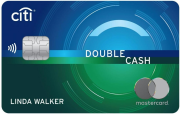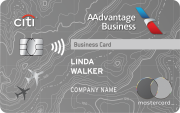The content on this page is accurate as of the posting date; however, some of the offers mentioned may have expired.

Throughout 2011, banks wanting to entice more consumers to open up new lines of credit proffered amazing deals on a wide variety of different rewards credit cards. And many consumers took advantage of what banks had to offer, snapping up new cards that availed them of a multitude of perks for each purchase. According to data released by the Federal Reserve, the amount of consumer revolving credit, the majority of which can be attributed to credit cards, rose in November 2011 by $5.60 billion.
This trend is likely to carry right on into 2012 as banks are expected to unveil even bigger and better offers. Experts foresee banks continuing to be aggressive with their rewards offerings. Often times the most coveted of these rewards credit cards are the cash back cards which grant the user a certain percentage of cash back for using the card. Some even award cash back incentives when the cardholder exhibits good financial behavior such as paying their bills on time.
While any cash back may sound like a good deal, some cash back rewards credit cards may be more beneficial to you than others. Here are a few pointers to keep in mind when you are selecting which cash back rewards credit card to submit an application for:
Make Sure The Rewards Suit Your Regular Spending Patters
No matter how sweet the rewards seem, it is never advantageous to run up additional unnecessary debt on a credit card simply to get some cash back. The way to boost the value you’ll receive from a cash back credit card is to earn the maximum allowable percentage of cash back on purchases you would be making anyway.
Some cards offer an across-the-board 1 or 2 percent cash back on all purchases at all times. Others offer higher cash back percentage rates on specific categories of items or at specific retailers, and these usually revolve from month to month. Still others offer bonuses at various points throughout the year, such as an end-of-year 50% cash back bonus on everything you earned back the year prior.
Look for what card best matches your current spending patterns so that you can earn cash back for things you would be buying regardless.
Find Out The Rules Of Redemption
It is also important to consider how easily you will be able to redeem your cash back earnings. Different credit card issuers have different rules when it comes to cashing in on your cash back. For example, with American Express you will need to earn a minimum of 25 rewards dollars in order to redeem them for cash back; with Chase you are required to amass at least 2,000 points before being allowed to redeem; Discover requires that you earn $50 in rewards and then you may redeem them in $50 increments; and Capital One allows you to exchange your rewards points at any time for cash in any amount.
Evaluate The Sign-up Bonus
If, after doing your research and comparing some of the cash back rewards credit cards available, you have found more than one that appeals to you, the sign up bonus may be the deciding factor. One thing to know is this: the bigger the sign up bonus, likely the higher the APR. If you know that you won’t be revolving a balance from month to month, then go ahead and take the most generous sign on bonus you can find.
As always, no matter which credit card you choose be sure that you carefully read every word of the terms and conditions so you know all of the pros as well as all of the cons before opening an account.





